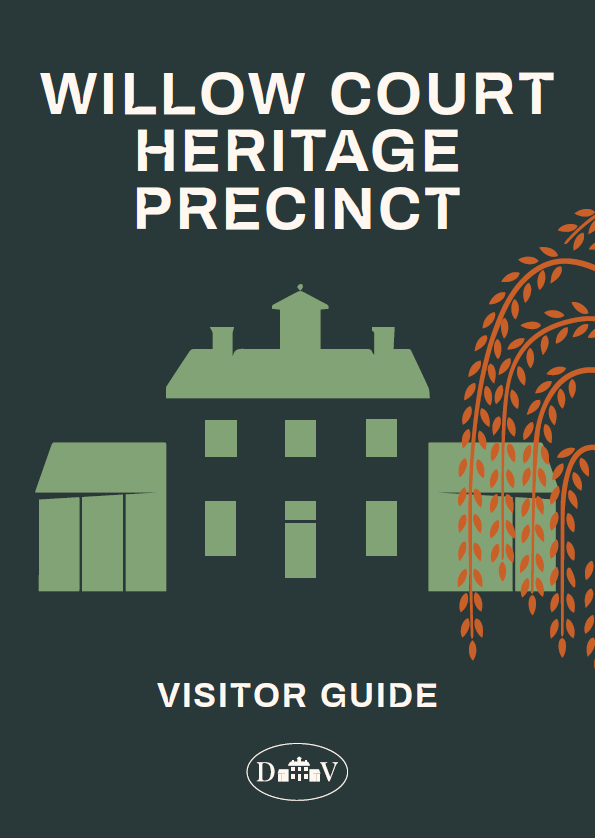About Willow Court
Willow Court was established as a depot for chronically ill, or ‘invalid’ convicts, in 1827. One of the oldest continually run asylums in Australia, the institution was commissioned by Governor George Arthur and designed by renowned Colonial Engineer, John Lee Archer.
From its establishment in the 1820s to its closure in 2000, Willow Court was shaped by the evolution of ideas and practices relating to the treatment of mental health and disability. Over time, the facility provided services for adults and children living with disability and/ or mental illness, those experiencing alcoholism, people deemed ‘morally delinquent’, including young unmarried mothers, the ‘criminally insane’, and members of the LGBTQI+ community. Through various stages of construction and demolition, operational changes, technological advancements, and name changes, this precinct has been in a constant state of flux.
By the late twentieth century, as new ways of care were introduced, patients were gradually removed from the institutional setting of Willow Court into supported accommodation across the State. Today, this assemblage of heritage buildings, yards, gardens and streetscapes reveals a complex and multi-layered story of a public health institution that has left an indelible mark on the Tasmania community. (Source: Willow Court Heritage Precinct Visitor Guide)
For more information on the history of Willow Court read the Willow Court Heritage Precinct Visitor Guide. This guide provides visitors with a brief introduction to the unique history of Willow Court, including a site map of the many Willow Court historic buildings that make up the precinct.
Download the Willow Court Heritage Precinct Visitor Guide.
Visiting Willow Court
Take a walk: Wander down the historic Avenue to the Willow Court Barracks. The Barracks Courtyard area is open most days to members of the public. Feel free to walk through and have a look at this heritage-listed site. Along the Avenue you will also see several other buildings being restored and redeveloped as part of precinct activation.
Find out about our local history: Arrange a visit to the New Norfolk Historical Information Centre to find out more about the Willow Court historical collection and our local history.
Activation of the Willow Court Heritage Precinct
The Tasmanian community has a long connection to Willow Court. The Derwent Valley Council, with community and our many partners, is committed to seeing Willow Court evolve as a premier heritage experience and destination. As the site continues to progress, further visitor experiences will develop too.
Council recognises that the activation of Willow Court plays an important role in the ongoing development of the town and region with economic, cultural and community benefits.
We recognise the significant heritage value and importance of preserving and respectfully acknowledging the history of the site and how the historical precinct continues to be developed. The Willow Court Ethical Principles and Guidelines, endorsed by Council in 2022, has been created to guide Council and precinct partners in this work with a number of developments underway.
Willow Court Heritage Interpretation Plan
In May 2022, Derwent Valley Council (DVC) hired Curio Projects (Curio) to review and update the Willow Court Heritage Interpretation Plan. The plan outlines how the Derwent Valley Council, precinct partners, stakeholders, and those who engage with Willow Court can communicate its heritage values. This updated version will ensure that it incorporates contemporary best practices and builds on previous plans commissioned by Council, to better represent the unique and evolving heritage precinct of Willow Court.
